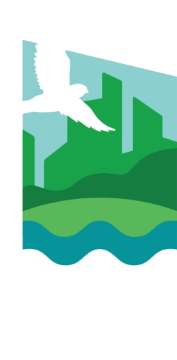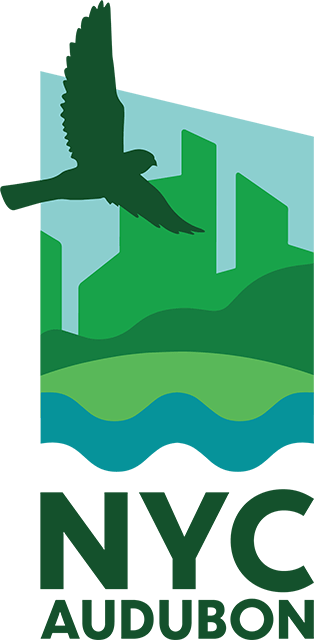Wolfe's Pond Park
A Least Tern on Wolfe's Pond Beach. Photo: Isaac Grant
During the early 1800s, this area was farmed by Joel Wolfe, hence the name. Now it is a New York City Park. The Department of Parks and Recreation built a playground (with restrooms) and is planning tennis courts, leaving natural much of the 336 acres which feature woodlands of maple, oaks, and beech; ponds; and a ¾-mile stretch of dunes and cobbled shoreline. Wolfe’s Pond, a 16-acre freshwater body of water perched above the Staten Island water table, is only a short distance from oceanfront dunes. Legend has it that oystermen dammed up a tidal inlet to create a place to wash their catch. The pond is an ideal spot for night-herons, many duck species, and Belted Kingfisher. Wood Duck can be seen here in the spring and fall.
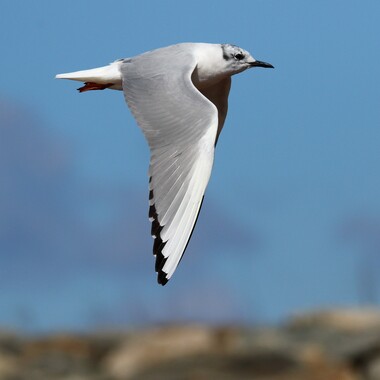
Bonaparte's Gulls are winter visitors to Wolfe's Pond Park. Photo: Isaac Grant
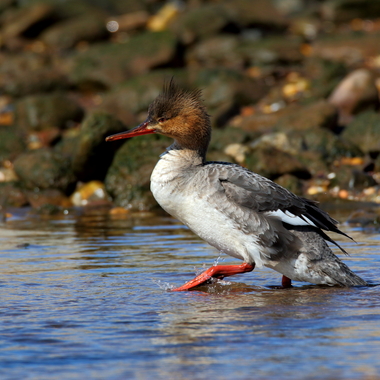
A female Red-breasted Merganser tests the water. Photo: Isaac Grant
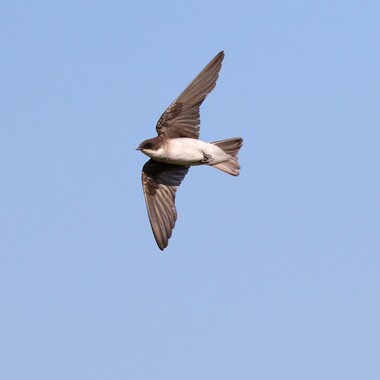
A young Tree Swallow in Wolfe's Pond Park (don't let the blurry band across its chest fool you into ID'ing it as something else). Photo: Isaac Grant
Birding Highlights by the Season
(no star = birding is not very productive, ✸ = somewhat productive, ✸✸ = productive, ✸✸✸ = very productive)
Spring Migration ✸✸
Lingering waterfowl; shorebirds and waders; Northern Gannet; warblers and other land birds
Summer ✸✸✸
Foraging wading birds, gulls, and terns, American Oystercatcher; Osprey; migrating shorebirds; nesting Killdeer, Warbling Vireo, Fish Crow, Barn, Tree, and Bank Swallows, Purple Martin, Yellow Warbler, Cedar Waxwing, Orchard and Baltimore Oriole
Fall Migration ✸✸✸
Shorebirds; raptors; warblers, thrushes, sparrows, and other songbirds
Winter ✸✸✸
Wintering waterfowl including dabbling and diving ducks, grebes, and loons; gulls and possible alcids; Northern Gannet
Year-Round Highlights
Dabbling waterfowl, gulls, Killdeer, possible Bald Eagle, Belted Kingfisher, woodpeckers
Get Oriented
View a Google map of Wolfe's Pond Park.
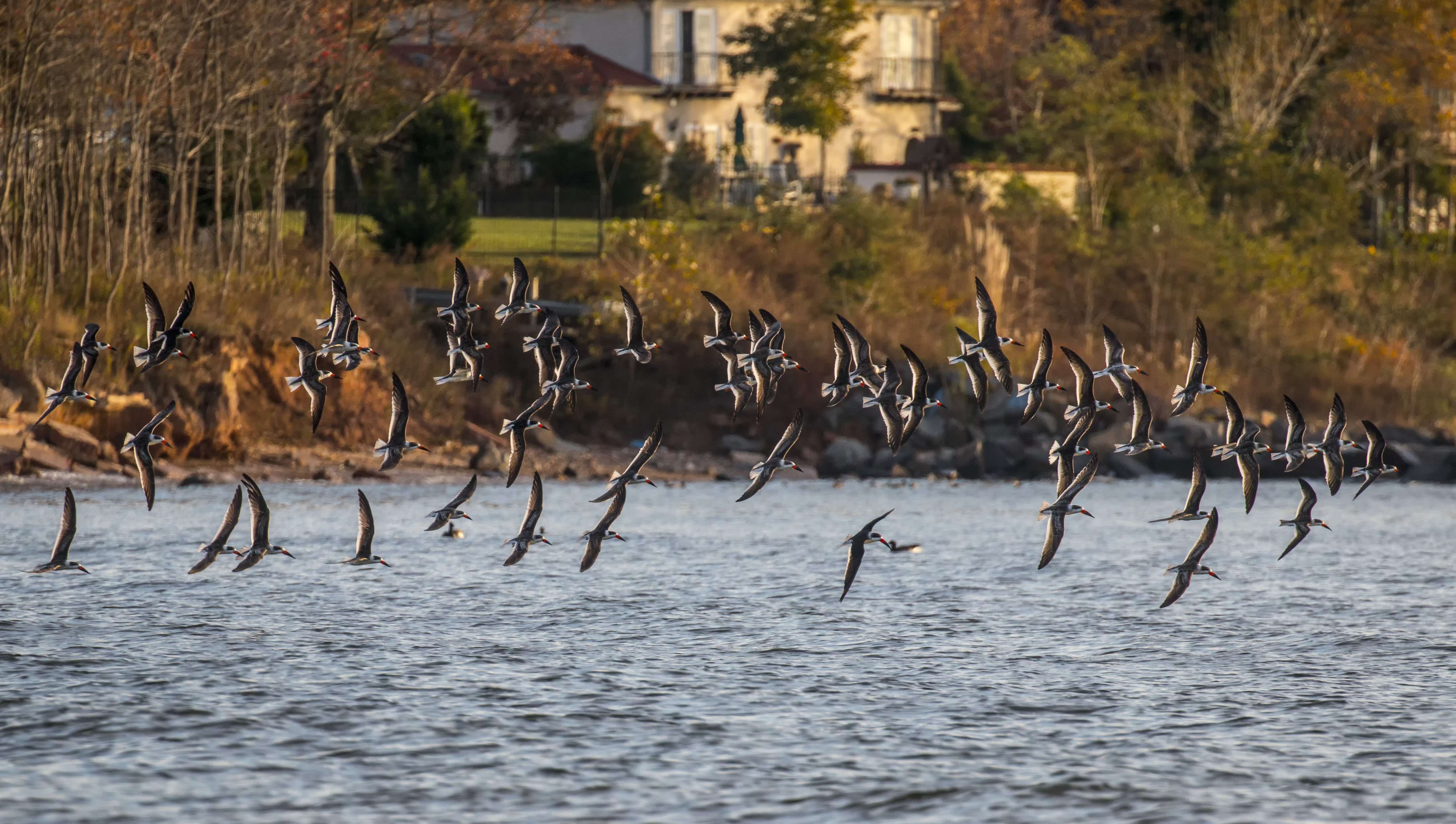
Black Skimmers visit Wolfe's Pond. Photo: Lawrence Pugliares
Wolfe's Pond
From the parking lot, cross the lawn to Wolfe’s Pond. Walk north along the pond’s eastern edge (back toward Hylan Boulevard) checking it for waterfowl and wading birds. Scan the shrubs and trees for migratory songbirds. Following an old roadbed that goes into the woods, you will enter a ravine, which was created by the outflow from Acme Pond, a 5-acre body of water on the north side of Hylan Boulevard.
Staying on the south side of Hylan Boulevard, take the trail to the left, which crosses a stream, and ascend the steep slope of the forested ravine to a ridge. From here you can search the treetops in the ravine for songbirds, as well as scan Raritan Bay for waterfowl. During fall migration and winter, all three species of merganser can be found on the pond, in addition to American Wigeon, Lesser Scaup and Redhead. Eurasian Wigeon is an occasional visitor.
Staying on the south side of Hylan Boulevard, take the trail to the left, which crosses a stream, and ascend the steep slope of the forested ravine to a ridge. From here you can search the treetops in the ravine for songbirds, as well as scan Raritan Bay for waterfowl. During fall migration and winter, all three species of merganser can be found on the pond, in addition to American Wigeon, Lesser Scaup and Redhead. Eurasian Wigeon is an occasional visitor.
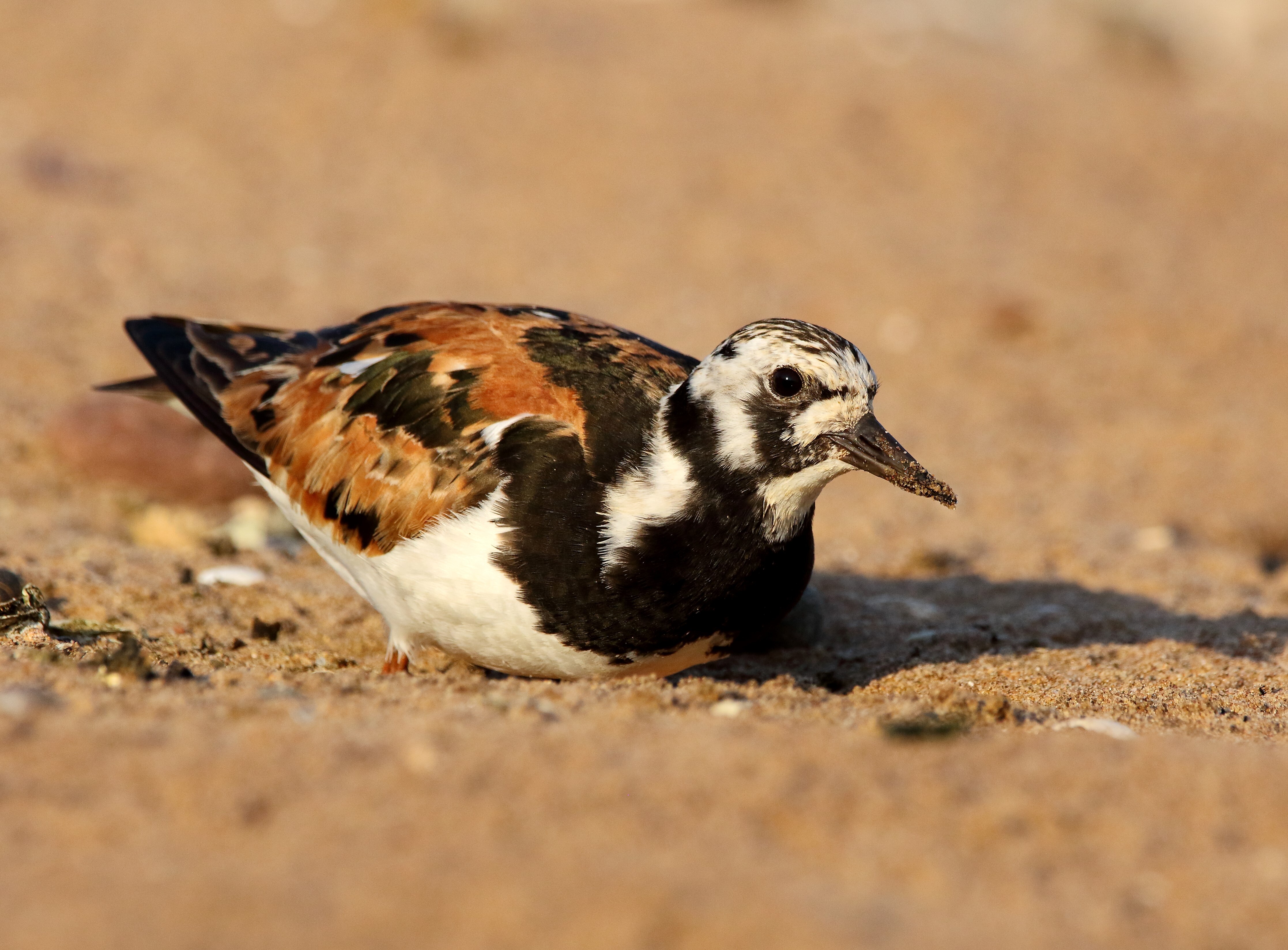
A Ruddy Turnstone takes a rest on Wolfe's Pond Beach. Photo: Isaac Grant
Wolfe's Pond Beach
Walk the beach area in winter to view loons, Common Goldeneye, Long-tailed Duck, and large rafts of Brant that can be seen in the bay. The latter stay until the end of May, when they depart for their northern breeding grounds. Scan through the gulls on the beach for Glaucous and Iceland Gulls. A scope is recommended.

Check the leaf-strewn edges of Acme Pond for Rusty Blackbirds in the wintertime. Photo: Ryan F. Mandelbaum
Woodland and Acme Pond
Cross Hylan Boulevard to stroll through an impressive mature forest that started sprouting after the colonists abandoned farming on Staten Island. There is good birding both in the woodlands and at Acme Pond, but dirt bikers disturb the tranquility, cause erosion, and destroy avian habitat. Rusty Blackbird frequent Acme Pond from late autumn through winter, and Fox Sparrow are here in winter.
A small stream, where Common Snipe are seen, runs from Eylandt Street and can be accessed from Tottenville High School on Chisholm Street.
Wood Duck breed at Bunker Ponds Park , also owned by City of New York/Parks and Recreation. This park is located opposite Intermediate School 7 at the intersection of Huguenot Avenue and Hylan Boulevard. Make a side trip to Bunker Pond, if you have time.
When to Go
See "Birding Highlights by the Season" above; the eBird links below also may be helpful. To learn about bird migration times and get other timing tips, see the When to Bird in NYC guide on our Birding 101 page.
For park operating hours, see the “Directions and Visiting Info” section, below.
eBird
View eBird hotspot records for Wolfe's Pond Park to explore recent bird sightings, species bar charts, and more. (Click on “Hotspot Map” at left to see nearby hotspots.)
Personal Safety
Some parts of Wolfe's Pond Park are isolated, so it is best to bird with others. Beware of dog ticks and poison ivy. Mosquitoes can also be a problem.
Guided Bird Walks
The Staten Island Museum, founded in 1881 by a group of young Staten Island naturalists, offers bird and nature walks in Staten Island's parks throughout the year, along with many other programs and educational activities.
Protectors of Pine Oak Woods, Staten Island's principal land conservation organization, offers bird and nature walks and other conservation-oriented events throughout the year. Protectors of Pine Oak Woods and its forerunner, SIGNAL, were involved in the preservation of much of Staten Island's parkland, and the organization continues to fight for the responsible stewardship and preservation of the island's wild habitats.
Directions and Visiting Information
View a Google map of Wolfe's Pond Park.
Visit the NYC Parks pages for Wolfe's Pond Park and Wolfe's Pond Beach for operating hours, directions, and additional background information.
Visit the NYC Parks pages for Wolfe's Pond Park and Wolfe's Pond Beach for operating hours, directions, and additional background information.
Acknowledgments
Thanks to those who provided local birding expertise for this page: Edward Johnson (2012, 2001); Howard Fischer (2001).
